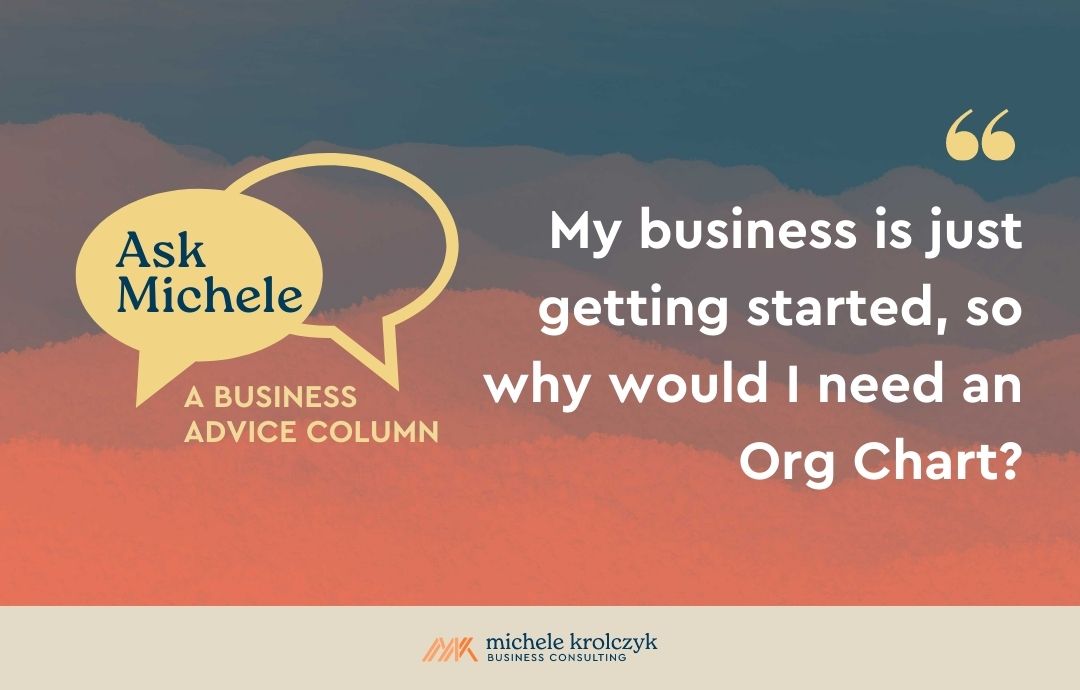“My business is just getting started, so why would I need an Org Chart?”
I love this question because I get a lot of confused looks when I’ve coached up-and-coming businesses and I ask them about how they’re structured.
“Pfffft…there are only four (or one or five) of us and all of us do everything.” Trust me. I get it.
But an Org Chart does more than show who reports to who. Done correctly, it will show you many important things, including your next hire.
The Elements of an Org Chart
Structure (Think Functions)
Every business, no matter how big or small, needs a Sales/Marketing function (someone to tell the story and bring in business); an Operations function (someone to deliver the products or services being sold); and a Finance/Admin function (someone to handle all the internal mechanics of running a business).
Once you understand those main elements, it’s important to customize them to fit your business. For example, sometimes Sales and Marketing are housed under one seat/function. Sometimes they break out into two separate seats/functions.
There’s also a fourth function: The Operator. This person acts as the conductor to the orchestra, making sure all the above functions are working harmoniously together. That’s a story for another day.
While it’s true that founders of small organizations often sit in all of those “seats,” chances are, they are not stellar at all of them. So building an Org Chart allows you to think about where you bring the most value, and which seat you’d take yourself out of first (also known as your next hire). Otherwise, it’s a recipe for burnout and you’ll frustrate anyone you do have working with you.
Accountabilities
The next step is to identify the 5-7 primary roles within each of the functions so we are clear on who is accountable for what. It gets real crazy real fast when the lines are blurred.
Instead of, “We all do the marketing,” identifying the roles of the marketing function will do two things: 1) Put someone squarely in charge of the function (even if they delegate aspects of marketing to others and 2) help you truly understand the talent you need for that seat (and realize if there’s a gap).
KPIs (Key Performance Indicators)
Some leaders struggle with what kind of data to measure. Establishing Key Performance Indicators for every function will give you a great start! Having clearly defined measurables for each function/seat will provide loads of clarity around expectations and responsibilities for everyone. Zero ambiguity!
The challenge most leaders face with this notion is actually holding people to the expectations. Again, a story for another day.
People
So we’ve identified the functions/seats and the roles for each one to create clarity and accountability. We’ve established the KPIs. Now you need to fill those seats with people that will fuel the impact to the organization (the right talents for the job) and fit your culture. If you don’t know how to define your culture… I can help you with that, too.
What Are You Waiting For?
Taking the time to do this will help create a very clear picture about how to grow your organization and keep you sane while you’re doing it. Be sure to revisit the Org Chart on a regular basis. If it’s not working, then change it! Contact me if you need help getting started.













This Post Has 0 Comments